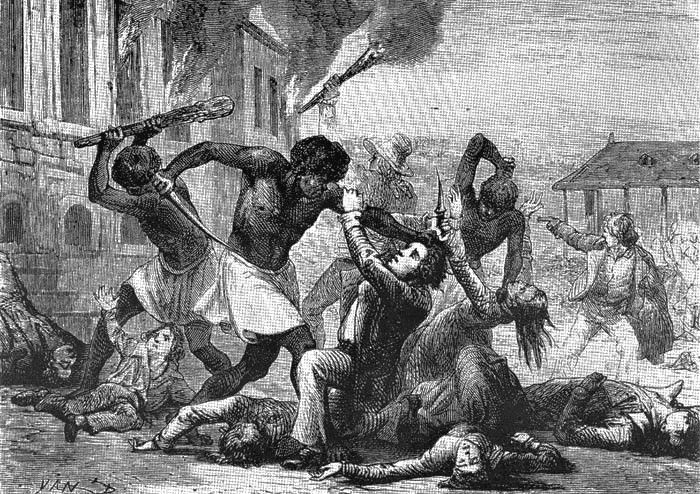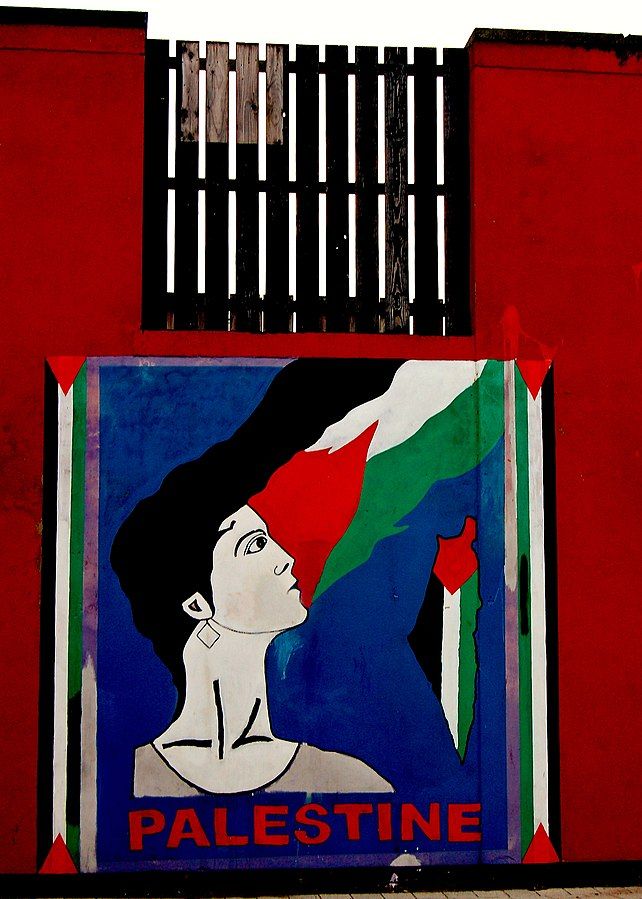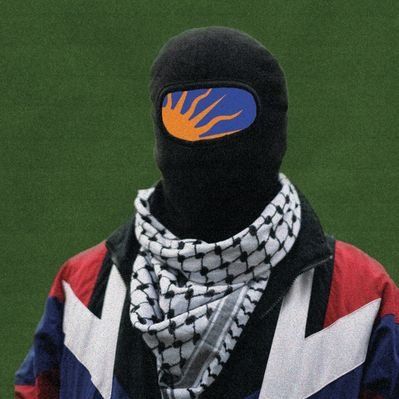This is the second part of a two part series (read the previous part here). This article was originally published in full by Negation Mag, and is being republished here (with edits) with their permission.
The first part examined Bobby Sands’ writings and the 1981 hunger strike by the H-Block prisoners in the Maze prison in the North of Ireland. In particular, it focused on the concept of freedom as it arises as resistance to necropolitical control.
This part will revisit the concept of necropolitics, talk about methods of resistance to it, and connect the Irish resistance to that of the Zapatistas and the Palestinians.
Resisting Necropolitics
The first part of this essay referred to Patrick Wolfe’s description of how race was developed and structured in his work Traces of History: Elementary Structures of Race (analysed here by Alana Lentin):
‘Race, it cannot be stressed strongly enough, is a process, not an ontology, its varying modalities so many dialectical symptoms of the ever-shifting hegemonic balance between those with a will to colonize and those with a will to be free, severally racialised in relation to each other. Race registers the state of colonial hostilities. The common factor is whiteness.’
The relevant insight here is that the methods of rule resisted by the Hunger Strike were first tested out in the imperial colonies. This means resisting the prison is to resist necropolitics as it formed in a global context that expands beyond just Ireland.
It also informs our understanding of Bobby Sands’ writings on freedom, for, if necropolitical sovereignty is a process, then it can be interrupted. And if, as Mariame Kaba stated in We Do This ‘Til We Free Us, the expansion of carceral sites and structures leads to the expansion of carceral logics into and within society, then the prison becomes a key point of intervention.
At the end of his initial essay on necropolitics, Achille Mbembe touches briefly on the different logics of resistance that meet the occupational forms of control. One of these is the logic of martyrdom, particularly that of suicide bombing. By creating a situation of ambush using one’s own life and body to take the lives of those who have sovereignty over them, ‘the self-sacrificed proceeds to take power over his or her death and to approach it head-on.’ Despite their differences, the two tactics of hunger striking and suicide bombing share a key similarity in the displacement of sovereignty, as Lise Olivarius keenly highlights:
‘The hunger striker makes herself the subject of the violence that s/he is already the object of. The violence might not change degree or even character, but its agent is displaced from the state to the hunger striker [...]. This is unacceptable for the sovereign state whose power is based on its monopoly on violence.’
Through the use of their own body, the hunger striker disturbs the necropolitics of the prison through taking control of the life, and thus death, that was seemingly in the colonial state’s possession. It is there that we can find the specific articulation of freedom that Bobby Sands writes about: a freedom that is irreducible, especially for those who are resisting necropower.
This freedom exists at the zero point of action, at the level of the individual body, for as long as the person who resists survives and retains their consciousness. At this level, anything and everything at the freedom fighters’ immediate disposal becomes a weapon against necropower. And above all, their own life and death are weapons in that resistance.
Resisting necropolitics also occurs on the collective level, though an individual often resists with mind to collective aims, and said resistance can be as much about an affirmation of life as it is control over death. There are two examples to draw upon in what this might look like. First we can look to the Zapatistas, who have been engaged in armed and then political resistance in Mexico since 1994. For them, resistance meant to organise their communities and have autonomy over working the land, ensuring that Indigenous ways of life survived and developed. As Subcomandante Moisés describes it:
‘Resistance and rebellion guide our laws as Zapatistas. Through resistance and rebellion, we create and improve our laws and accords, always through assemblies in the communities, always through democracy. That is to say, through the thought and the voice of the people.’
Resistance happens through living – in particular, living in opposition to the social mode of death that targets Indigenous communities. It means living in a more democratic way. We can also look to the prayer led by Dutty Boukman given at the start of what would become the Haitian Revolution:
‘The god who created the earth; who created the sun that gives us light. The god who holds up the ocean; who makes the thunder roar. Our God who has ears to hear. You who are hidden in the clouds; who watch us from where you are. You see all that the white has made us suffer. The white man's god asks him to commit crimes. But the god within us wants to do good. Our god, who is so good, so just, He orders us to revenge our wrongs. It's He who will direct our arms and bring us the victory. It's He who will assist us. We all should throw away the image of the white men's god who is so pitiless. Listen to the voice for liberty that speaks in all our hearts.’
Here we find that the freedom that ‘speaks in all our hearts,’ is also the ideological framing of freedom and liberty that is the crystallisation of consciousness in Black slaves, through the development of African religion interacting with the material conditions of oppression. Boukman was a Vodou houngan (equivalent of a priest), and an integral part of the Voudou belief system was the belief amongst the revolting slave armies that ‘if they were killed they would wake again in Africa.’ It was this ideological and spiritual framing of their consciousness, and their engagement with their own culture and history, that allowed them to sustain the losses and succeed as they did against a better-armed colonial army.

This religion was an integral part of what Cedric Robinson has termed ‘the Black radical tradition’ in his seminal work Black Marxism., In the context of Haiti, this meant ‘the preservation of the ontological totality granted by a metaphysical system that had never allowed for property in either the physical, philosophical, temporal, legal, social, or psychic senses.’ Because African slaves and Black people were and are a group who historically were denied capitalist property relations, as well as the status of whiteness – which was itself a property to be held – they could draw on existing African cultural practices to develop new frameworks for living. To go beyond property, they started with the body, which had for them been rendered as property. They could take control of their body and their body only, and yet also open up a range of radical possibilities because of the belief that this irreducible part remained and survived.
It could be argued that this in part was informed by the continued survival of African culture within slave communities, despite the frequent reckoning with death, whether on the plantation or in a liberation war. And because of this survival, above all it meant that ‘[slaves] lived on their terms, they died on their terms and they obtained their freedom on their terms.’ It allowed them to relate to each other as a revolutionary political mass. As Robinson concludes in his seventh chapter, the Black radical tradition was ‘the continuing development of a collective consciousness informed by the historical struggles for liberation and motivated by the shared sense of obligation to preserve the collective being, the ontological totality.’
Resistance through Culture
A similar obligation can be found in Bobby Sands’ writings. He understood very well that even one IRA prisoner accepting a criminal status would discredit the entire republican struggle. For him, it was important to ensure that the struggle continued, but also that the parts of him that constituted his consciousness, and therefore his dignity, also survived: ‘every time I feel down I think of Armagh, and James Connolly. They can never take those thoughts away from me.’ Here we find a crucial, second part of how Bobby Sands’ writings have created an important body of work on freedom: by engaging in the act of writing, of creative and cultural resistance. Bobby Sands wrote many poems and pieces of short fiction throughout his time in prison, and it was clear that this creative activity formed an important part of his own inner life. On Thursday 12th March 1981 in his Prison Diary, Sands writes:
‘I have poems in my mind, mediocre no doubt, poems of hunger strike and MacSwiney, and everything that this hunger-strike has stirred up in my heart and in my mind, but the weariness is slowly creeping in, and my heart is willing but my body wants to be lazy, so I have decided to mass all my energy and thoughts into consolidating my resistance.'
Whatever his opinion of his own work, Sands was clearly creating and developing cultural resistance even on hunger strike. And then on the final day he writes:
I was thinking today about the hunger-strike. People say a lot about the body, but don't trust it. I consider that there is a kind of fight indeed. Firstly the body doesn't accept the lack of food, and it suffers from the temptation of food, and from other aspects which gnaw at it perpetually.
The body fights back sure enough, but at the end of the day everything returns to the primary consideration, that is, the mind. The mind is the most important.
But then where does this proper mentality stem from? Perhaps from one's desire for freedom. It isn't certain that that's where it comes from.’
It becomes clear that whenever possible, culture and the consciousness it formed becomes an important component for maintaining the desire and drive to continue resistance. A recent and clarifying example of this comes from the Palestinian militant and theatre artist Zakaria Zubeidi. Originally a child actor in the ‘Stone Theatre’ set up by Israeli activist Arna Mer Khamis, Zubeidi would go on to become a leader of the Al-Aqsa Martyrs Brigade in the Jenin refugee camp during the Second Intifada and onwards. After standing down, he set up The Freedom Theatre with Arna’s son Juliano, and they started creating work with adults and children in Jenin. Despite his work in theatre coming after his standing down, Zubeidi refuses the false dichotomy between cultural resistance and other forms of resistance, specifically armed resistance. Writing in a collection of essays for the Theatre, he states:
‘People think that Zakaria went from armed resistance to cultural resistance. I did not. I burst open the lock to the theatre with the butt of my machine gun. You can't separate armed resistance from cultural resistance. Somebody needs to tell the story of the fighter: Who is he? Why is he doing what he is doing? You cannot just take a picture and write that he is a terrorist. Armed resistance is not one soldier killing another soldier. It is a civil uprising with fighters trying to defend themselves with whatever is available.’
This last line shares many similarities with an anecdote from Jean Genet’s memoir Prisoner of Love, a recount of his time with Palestinian Fedayeen (meaning those who sacrifice for a larger cause) and the Black Panthers. Early on in the memoir, he recalls how Fedayeen were staying in a camp in Jordan, but were banned by their officers from playing cards (which was characterised as a “bourgeois” game). But to his surprise, they manage to undermine this command in an unorthodox way. I quote Genet at length here:
‘Two men came in. They were fighters, still quite young but with downy moustaches on their upper lips to show how tough they were. They weighed one another up,… each trying to intimidate the other. Then they sat down facing one another, lowering themselves casually but stiffly on to the benches and hitching up their trousers to preserve a non-existent crease….
The newcomer sitting next to me took his hand out of the left-pocket of his leopard trousers, and, with a movement at once very human and yet seeming to belong to some rare ceremonial, produced a small pack of fifty cards which he got his partner to cut. Then he fanned the cards out in front of them. One of the two swept them up and arranged them in a pack again, examined it, shuffled the cards in the usual way and dealt them out between the two of them. Both looked serious, almost pale with suspicion. Their lips were tight, their jaws set. I can still hear the silence…
The game began. Gambling… filled both their faces with greed. They were equally matched…. Around the two heroes, everyone tried to catch a brief glimpse of their swiftly concealed hands. Against all the rules the onlooker behind each contestant made signals to the player opposite, who pretended to take no notice…. One of the players dropped a card on the floor and picked it up so nonchalantly it reminded me of a film in slow motion.
I thought people would think he'd been cheating, imitating an "accident" familiar to card-sharpers. What little Arabic I knew consisted mainly of threats and insults. But the words charmouta ["whore"] and hattai ["degenerate"] muttered between the players' clenched teeth and lips gleaming with saliva were quickly bitten back.
The two players stood up and shook hands across the table, without a word, without a smile.’
Genet reveals at this point that the Fedayeen are not using any cards at all, and that they are playing the entire game with empty hands. He characterises this performance as a demonstration of disillusionment, which is not wrong given the context of the Palestinians struggle at the time, not to mention the violence and tragedies and defeats they have faced since then. But I also think it expresses Zubeidi’s description of a civil uprising, for the Fedayeen create resistance from nothing, relying on their own actions and body in performance to disrupt the orders given to them.

Anything and everything becomes a weapon of resistance when you are given nothing. I think this creative capacity is only compounded through cultural resistance. Here the Palestinians, both in the 70’s and in Zubeidi’s work with The Freedom Theatre, express the same creative and critical engagement with consciousness raising, albeit in a different way, to the Black Radical Tradition and to the H-Block Hunger Strikers. Drawing from what Gavin O’Toole notes in the Morning Star review of A Shared Struggle: Stories of Palestinian and Irish Hunger Strikers, the strong cultural tradition in prison in both Irish and Palestinian detainees, along with the ongoing solidarity between them, arises from the similarity in oppression, where ‘Britain’s nefarious role is ever present: Israel routinely uses “administrative detention” to incarcerate Palestinians without due process under emergency laws dating from the British mandate and indistinguishable from “internment” in the north of Ireland.’
But in these locus points where the logic of necropower crystallises, the role of the cultural resistance fighter becomes all the more clear. Zubeidi clarifies that this is:
‘to translate the armed, religious and political modes of resistance and to be the criticizing force against all of them. Everything revolves around cultural resistance; it is impossible to understand the fight without cultural insights.’
This then articulates why Bobby Sands’ writings are important to necropolitical resistance. Cultural resistance and the creative capacities it unlocks are not just a component for the physical resistance, or for allowing cultural practices to survive. They also allow radically alternative conceptions of existence to live. The culture that has been excluded from the commodified and colonial world of racial capitalism is also one that is irreducible because it exists at a sort of zero level - that is to say, within the minds and hearts of the colonised.These forms have created the cultural conditions of the struggle Sylvia Wynter describes as ‘the central struggle of the current age, the struggle between “Man” – the over-represented (Western bourgeois) ethnoclass human figure – and the “well-being, and therefore the full cognitive and behavioural autonomy of the human species itself/ourselves.”’
Therefore, when one creates whilst resisting, and uses creating and culture as resistance, one allows not only the sedimented history of a collective to survive, but also the potential alternative forms of being as well. For Bobby Sands, his writings and poetry were not just expressions of the cultural and ideological framework of Irish Socialist republicanism, but were the lynchpin for his hunger striking, being the irreducible alternative, waiting to be realised. The Freedom Theatre explains it eloquently in the description for their production of the Apartheid-era drama The Island:
‘The Island is a testament to the importance of culture as a tool for resistance, and for humanity. Despite the prisoners' circumstances their souls are thirsty and art is the water that keeps them alive. In Palestine, as in apartheid South Africa, we need to keep ourselves alive.’
Hunger-striking interrupts necropower. Cultural resistance can crop up in the space opened up in that interruption and, even if just for a moment, can allow the resistance fighter to imagine radical alternatives, and ultimately, a changed world. Cultural resistance, then, is how the counter-human remains, survives, and one day, even after we have departed, flourishes. It is this spirit of freedom that Bobby Sands believed to be an innate part of human existence throughout history. To demonstrate what is meant by that, I will simply leave you with a poem of his that situates freedom as the grain of sand in the eye of the necropolitical system, The Rhythm of Time:
There's an inner thing in every man,
Do you know this thing my friend?
It has withstood the blows of a million years,
And will do so to the end.
It was born when time did not exist,
And it grew up out of life,
It cut down evil's strangling vines,
Like a slashing searing knife.
It lit fires when fires were not,
And burnt the mind of man,
Tempering leadened hearts to steel,
From the time that time began.
It wept by the waters of Babylon,
And when all men were a loss,
It screeched in writhing agony,
And it hung bleeding from the Cross.
It died in Rome by lion and sword,
And in defiant cruel array,
When the deathly word was 'Spartacus'
Along the Appian Way.
It marched with Wat the Tyler's poor,
And frightened lord and king,
And it was emblazoned in their deathly stare,
As e'er a living thing.
It smiled in holy innocence,
Before conquistadors of old,
So meek and tame and unaware,
Of the deathly power of gold.
It burst forth through pitiful Paris streets,
And stormed the old Bastille,
And marched upon the serpent's head,
And crushed it 'neath its heel.
It died in blood on Buffalo Plains,
And starved by moons of rain,
Its heart was buried in Wounded Knee,
But it will come to rise again.
It screamed aloud by Kerry lakes,
As it was knelt upon the ground,
And it died in great defiance,
As they coldly shot it down.
It is found in every light of hope,
It knows no bounds nor space
It has risen in red and black and white,
It is there in every race.
It lies in the hearts of heroes dead,
It screams in tyrants' eyes,
It has reached the peak of mountains high,
It comes searing 'cross the skies.
It lights the dark of this prison cell,
It thunders forth its might,
It is 'the undauntable thought,' my friend,
That thought that says 'I'm right!'
Special thanks to our current patrons, who make everything we do possible:
Mr Jake P Walker, Aryeh Calvin, Meghan Morales, Kimonoko, Joshua Akapo, Diana Rahim, Chaotic Capybara, Christian Kennedy, Cy.Maggran, Bogdan Ovodiu Gheorghiu, La Val, Paul Treadwell, Alex Paterson, Loke, Ben Dunn, Barry, Nothing, Manic Maverick, Vervain, and Kevin Atkinson.
If you'd like to support out work, please consider becoming a Patron:




